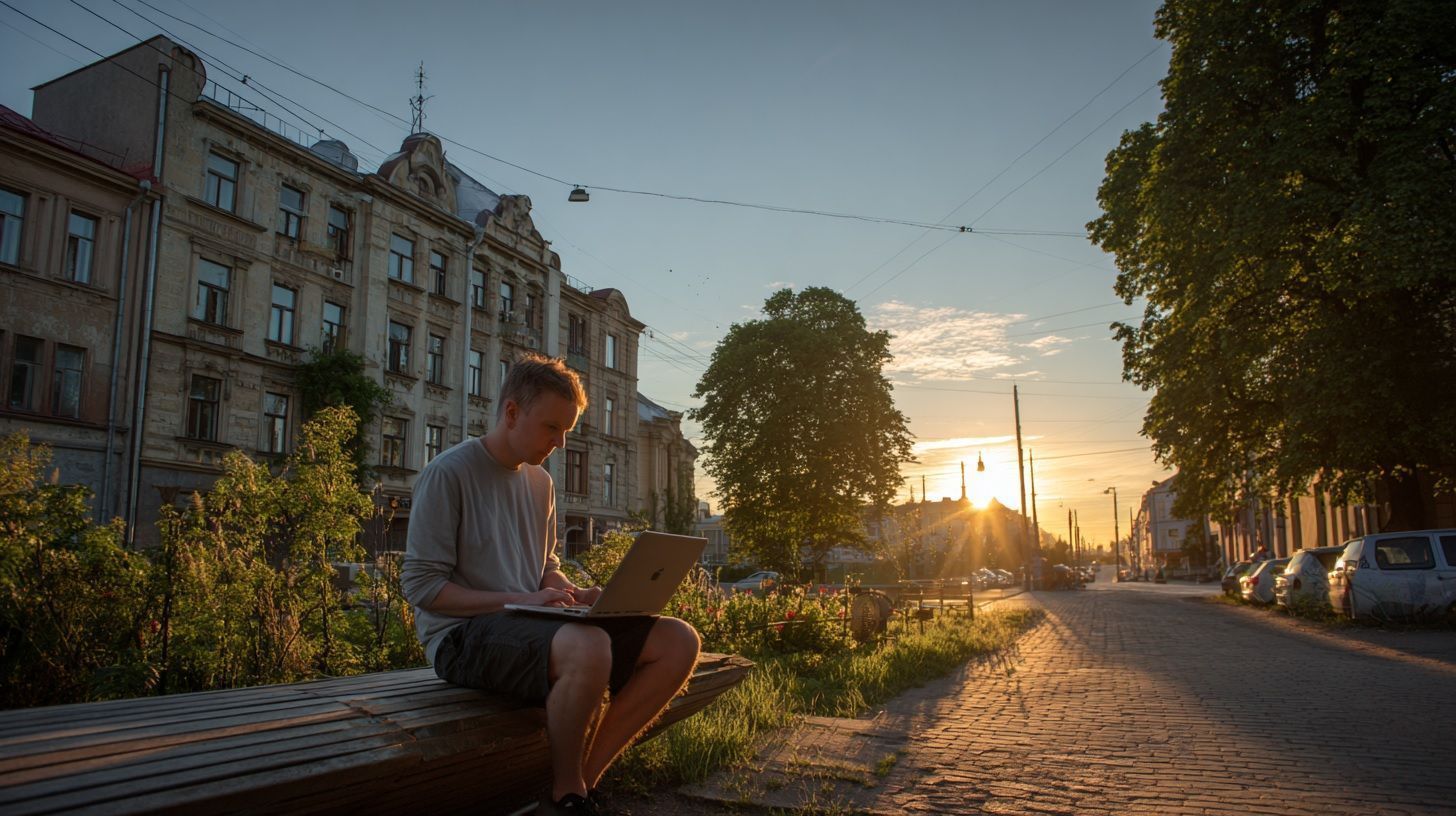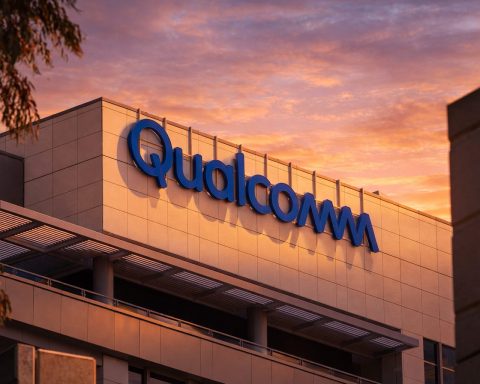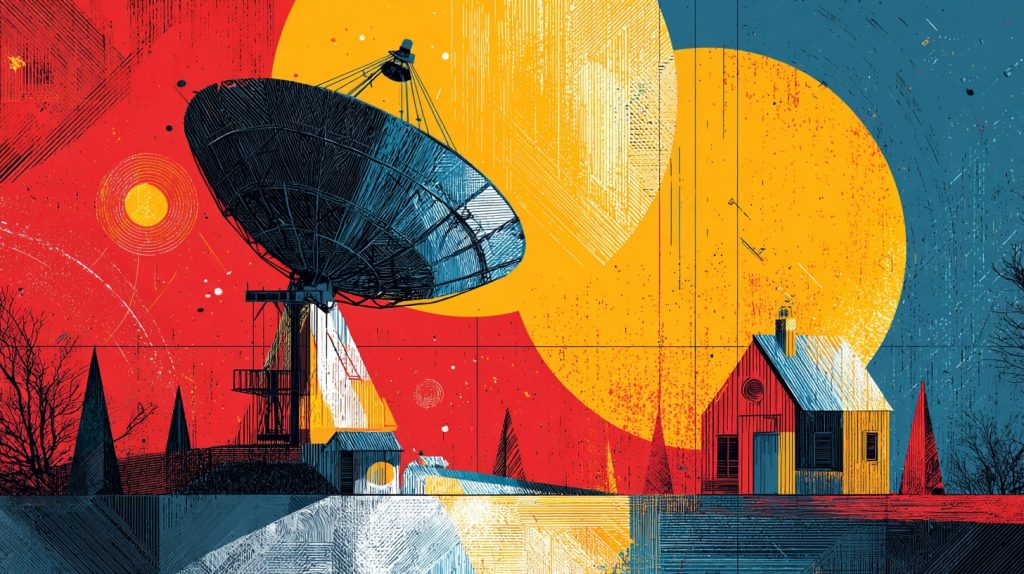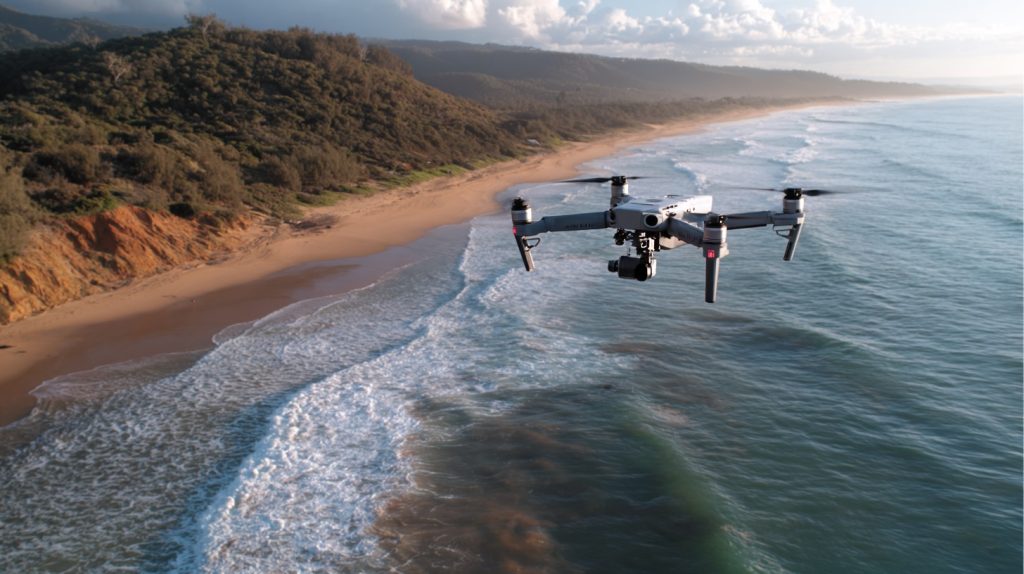- Latvia has about 1.9 million people, with roughly 92.9% online as of early 2024.
- Over 50% of Latvian households use fiber connections, placing Latvia among seven European countries with high fiber penetration.
- Latvia has the second-highest rural fiber-to-the-premises (FTTP) coverage in Europe, behind Denmark.
- As of 2022, 76% of fixed broadband subscriptions were over fiber, and over 38% of connections deliver speeds above 300 Mbps.
- Latvia’s median fixed broadband speed was around 89 Mbps in early 2024, with 10 Gbps fiber services being introduced in Riga in select areas.
- 4G networks blanket 99% of the population, and rural 4G coverage exceeds 99% of households.
- By 2023, 5G signals covered roughly 72% of Latvia’s population after 2022 spectrum auctions freed 700 MHz, 3.5 GHz, and 1.5 GHz bands.
- Starlink became available in Latvia in April 2022, delivering about 150–200 Mbps in remote areas at around €100+ per month.
- In 2024, about 1.69 million Latvians were internet users (about 92.9% of the population), and over 81% of internet users access e-government services.
- Fixed and mobile pricing is highly affordable, with 100 Mbps fiber plans often under €20 per month, 1 Gbps fiber €20–€30, and unlimited mobile data typically €20–€25.
A Baltic Broadband Success Story
Latvia, a small Baltic nation of 1.9 million, has quietly become a global leader in internet connectivity. With over 92% of its people online and surfing at blistering speeds, Latvia enjoys near-universal internet access [1] [2]. Whether it’s gigabit fiber in the capital or 5G signal in the countryside, Latvians are reaping the benefits of decades of tech investment and forward-thinking policy. From fiber-optic networks that blanket the country to 5G mobile broadband and even satellite internet for remote areas, Latvia’s digital infrastructure punches far above its weight. This report dives into all aspects of internet access in Latvia – fixed broadband, mobile networks, satellite options, usage trends, urban–rural gaps, major providers, costs, government initiatives, and how Latvia stacks up in the EU – to see how this “undercover” internet powerhouse came to be.
Fixed Broadband Infrastructure: Fiber, DSL, and Cable
Latvia’s fixed-line broadband is dominated by modern, high-speed networks, with legacy technologies rapidly fading. Fiber-optic broadband is king: Latvia ranks among Europe’s top countries for fiber deployment and adoption [3]. In fact, over 50% of Latvian households use fiber connections – one of only seven European countries to achieve such a high fiber penetration [4]. Crucially, fiber isn’t just an urban luxury; Latvia boasts the second-highest rural fiber-to-the-premises (FTTP) coverage in Europe, trailing only Denmark [5]. This means even many remote villages can access gigabit-capable fiber service, a rare feat internationally.
Older broadband technologies like DSL and cable still exist but have largely taken a back seat. The former telephone monopoly (now Tet) invested heavily to replace copper DSL lines with fiber, so digital subscriber line (DSL) coverage is nearly ubiquitous but usage is dwindling as customers upgrade. Cable broadband, once offered by providers like Baltcom and Balticom in cities, remains available in urban areas but is nonexistent in rural regions [6]. Instead of extending coaxial cable to the countryside, Latvia leapfrogged to fiber and wireless solutions. As a result, an impressive 76% of all fixed internet subscriptions were over optical fiber as of 2022, and over 38% of connections now deliver speeds above 300 Mbps [7]. By contrast, slower DSL or cable connections account for a shrinking minority of lines. This widespread fiber rollout has propelled Latvia’s median fixed broadband speed to around 89 Mbps as of early 2024 [8] – a figure that continues to climb each year.
The extensive fiber infrastructure has unlocked ultra-fast options for consumers. In Riga, 10 Gbps fiber services are being introduced to select areas [9]. Even a standard home connection in Latvia is often 100–500 Mbps, reflecting the country’s future-proof network. The benefits go beyond raw speed: Latvia’s robust fixed broadband has enabled a thriving digital economy with high e-commerce activity and e-government services accessible to virtually all citizens [10].
Mobile Internet: 4G Ubiquity and the 5G Leap
Latvia’s mobile internet is equally advanced, offering fast and far-reaching coverage. 4G (LTE) networks blanket 99% of the population [11], ensuring that virtually everyone can get online via a mobile device or wireless modem. The three main mobile operators (LMT, Tele2, and Bite) have built out extensive 4G infrastructure over the past decade, even in rural areas. Notably, a significant share of Latvians use mobile networks as their primary home internet: as of 2021, about 24% of households accessed the internet using mobile broadband only, one of the highest rates in the EU [12]. This underscores the reliability and capacity of Latvia’s LTE networks, which are often sold with generous unlimited data plans.
The 5G era arrived in Latvia in the early 2020s and is accelerating quickly. After some delays (Latvia was one of the last EU countries to launch commercial 5G by mid-2021 [13]), operators have moved fast to catch up. Spectrum auctions in 2022 freed up new bands (700 MHz for wide coverage and 3.5 GHz/1.5 GHz for capacity), and carriers coordinated with neighboring Estonia and Lithuania to deploy 5G in border areas interference-free [14] [15]. By 2023, 5G signals reached roughly 72% of Latvia’s population [16], concentrated in all large cities and along key transport corridors. Riga and other major hubs now enjoy 5G coverage, and expansion continues along highways (including the Via Baltica route) and smaller towns as new base stations come online.
For users, the mobile experience is getting dramatically faster. The median mobile download speed jumped to ~74 Mbps by early 2024 [17], a 60% increase in just one year thanks to 5G upgrades [18]. Real-world 5G speeds can reach into the few hundreds of Mbps under good conditions. Even 4G alone delivers solid performance – enough that many households use 4G/5G router devices as an alternative to wired internet. In 2022, Latvia’s mobile subscribers on average consumed 42 GB of data per month each – a whopping 18% more than the year prior [19] [20]. This extremely high data usage (among the world’s highest per capita) reflects both the popularity of streaming and the affordability of unlimited mobile data. It also speaks to the cultural trend: Latvians increasingly handle calls and messaging through internet apps instead of traditional voice/SMS, as seen in the 13% drop in texting and 9% drop in call minutes in 2022 [21] [22]. The mobile networks are clearly holding up to the task – boosted by ongoing 5G rollouts that promise even more capacity.
Satellite Internet Access: Starlink and Other Options
Even with Latvia’s extensive ground networks, satellite internet has emerged as a useful option, especially for those in the most isolated spots. Starlink, SpaceX’s low-Earth orbit satellite service, became available in Latvia in April 2022 [23]. For residents of remote farmsteads, distant islands in the Baltic Sea, or simply areas where fiber hasn’t yet reached, Starlink can deliver broadband speeds on par with terrestrial services. Early adopters in Latvia report downloads around 150–200 Mbps via Starlink [24] – a game-changer for locations that previously struggled with sub-10 Mbps via patchy 3G/4G or old DSL. Starlink’s impact has been noted in rural and coastal areas, where it complements mobile networks and improves connectivity options [25].
The main drawback of Starlink is cost. A Starlink subscription in Latvia is about €100+ per month, far pricier than local fiber or mobile plans [26]. However, for those “off the grid” of fiber and cellular coverage, the price can be worth it for a reliable high-speed link. One rural Latvian recounted that while Starlink costs €109 monthly, in the city one could get 1 Gbps fiber for €20 or unlimited 4G/5G for ~€25 – highlighting that satellite is really a niche lifeline when other options aren’t available [27]. Aside from Starlink, traditional geostationary satellite internet (offered by companies like Viasat) has also been available in Latvia, but these older services had lower speeds and higher latency, making them a last resort. As of 2025, Starlink remains the headline satellite player, and its presence ensures that virtually any location in Latvia, no matter how remote, can get online – be it through a wire, cell tower, or a satellite dish.
Internet Penetration and Digital Inclusion
Latvia enjoys one of the highest internet penetration rates in the world, on par with the most connected European societies. As of early 2024, about 1.69 million Latvians were internet users, equivalent to 92.9% of the population online [28]. Eurostat data for 2024 showed a similar figure (~94% of individuals had used the internet recently), up from around 70–75% a decade prior. This widespread usage means that being offline is increasingly rare – only roughly 7%–8% of Latvians remain non-users, primarily among older age groups or certain rural communities. Encouragingly, the digital divide is narrowing every year: even among seniors (65–74 years), approximately three quarters use the internet at least weekly, a share that has grown significantly and continues to rise.
Latvia places a strong emphasis on digital inclusion, striving to bring all citizens into the online fold. Public programs offer IT training and affordable devices to seniors and low-income groups, and virtually all libraries and community centers provide free internet access points. The government’s push for e-governance has itself incentivized people to get online – over 81% of internet users in Latvia utilize e-government services (e.g. filing forms, accessing digital IDs), a rate well above the EU average [29]. This means even older residents have reasons to go online for accessing healthcare, banking, or government portals. Notably, the gender gap in internet use is essentially nonexistent: 92% of women and 92% of men use the internet, according to 2023 data [30] [31].
Affordability has not been a major barrier in Latvia’s internet inclusion. Prices for basic internet service are low relative to incomes – a basic mobile broadband plan costs less than 1% of average monthly income (GNI per capita) in Latvia [32]. This easily meets the UN affordability target and is a better ratio than in many wealthier countries. Likewise, competitive pricing in the fixed broadband market and widespread availability of entry-level plans (including some social tariffs) mean that cost is seldom the reason a household is offline. The remaining offline population tends to cite lack of digital skills or simply lack of interest, issues the government is tackling via education and outreach. Overall, Latvia’s internet penetration is in the top tier of the EU (around 92% vs ~90% EU average) [33], reflecting a highly inclusive digital environment.
Urban vs. Rural Connectivity: Bridging the Gap
Geography often determines connectivity, but in Latvia the urban–rural digital gap is impressively small. In urban areas (home to ~69% of the population), virtually every household can access high-speed broadband – be it gigabit fiber in city apartment blocks or 4G/5G wireless in suburbs. Rural areas, while more challenging, have not been left behind: around 89% of rural residents use the internet [34], compared to 93% in cities, a gap of only a few percentage points. This parity is due to deliberate efforts to extend infrastructure outside the capital Riga and other big towns. Remarkably, Latvia has ensured that 93% of all households have access to high-speed internet (at least 30 Mbps) [35] [36], a level well above the European average of ~87%. Many EU countries struggle to get next-generation broadband to remote villages, but Latvia’s approach – a combination of fiber rollout and widespread mobile coverage – has made fast internet almost as common in the countryside as in the city.
In terms of infrastructure, rural Latvia is a standout. The country’s decision to pursue FTTP fiber broadly means that even some very small communities have fiber-optic lines. Latvia’s rural FTTP coverage (over 60% of rural households) is second only to Denmark in Europe [37]. Where running fiber isn’t economically feasible, 4G/5G networks fill in: 4G coverage in rural Latvia exceeds 99% of households (essentially universal) [38], ensuring that even if a farmhouse lacks a wired connection, it likely has wireless internet access. For example, farmers and remote workers in rural Latvia commonly use 4G/5G Wi-Fi routers or tethering to get connectivity in areas once considered too hard to reach. Satellite services like Starlink, as mentioned, are another piece of the puzzle for truly remote spots.
To further close the rural gap, the government has targeted investment to “last mile” projects. Under the EU-funded Recovery and Resilience Plan, €4 million is allocated to build out 1,500 high-speed connections in rural areas that private ISPs hadn’t covered [39] [40]. These projects focus on farmsteads, schools, and clinics in sparsely populated regions. Another €12.5 million is going into the Via Baltica 5G corridor – installing fiber along Latvia’s segment of the highway to guarantee mobile base stations there have gigabit backhaul [41]. By leveraging such public investments to complement commercial networks, Latvia is aiming for true ubiquitous connectivity: the national goal is 100 Mbps broadband available to every household, rural or urban [42] [43]. While a small minority of rural users still face slower connections today, the trajectory is clear – Latvia intends to erase the digital divide between city and countryside.
Major Internet Service Providers and Market Share
Despite its modest size, Latvia has a fairly competitive telecom market with numerous players, though a few big names lead the pack. In the fixed broadband segment, the former incumbent Tet (once Lattelecom) remains the dominant provider. As of 2022, Tet supplied about 50% of all fixed broadband connections in Latvia [44] [45]. Tet operates the largest fiber-to-the-home network and also offers DSL in areas not yet fiber-upgraded, as well as public Wi-Fi and TV services. The next largest fixed ISP is Baltcom, a company originally known for cable television service, which has about 20% market share – primarily via cable and some fiber in urban areas [46] [47]. Close behind is Balticom (note the similar name), a smaller ISP with roughly 15% share [48] [49]; Balticom competes in Riga and other cities, offering fiber and wireless broadband. The remaining ~15% of fixed broadband connections are split among dozens of “other operators” – these include regional fiber providers, apartment building networks, and niche players (for example, Norby Telecom or utility-owned networks). The fact that the top provider has only 50% and that others like Baltcom/Balticom have sizable portions suggests Latvia’s fixed broadband market, while oligopolistic, is not a pure monopoly – consumers do have choices in many areas.
In the mobile sector, three nationwide operators share the market, and their competition is vigorous. These Mobile Network Operators (MNOs) are: Latvijas Mobilais Telefons (LMT), Tele2 Latvia, and Bite Latvija. Each operates extensive 2G/3G/4G networks and is deploying 5G. Market share is split roughly as follows: LMT and Tele2 each have about 38% of mobile subscriptions, and Bite accounts for around 23% [50] [51]. This means even the “smallest” player, Bite, has nearly a quarter of the market – a healthy sign of competition (indeed, regulators note that the smallest of the three still has almost one-fourth of subscribers) [52] [53]. LMT, founded in 1992, was the first mobile carrier and is known for innovation (it was early with 5G trials and IoT projects). Tele2, part of a Swedish telecom group, competes aggressively on price and claims a slight edge in subscriber numbers in some metrics. Bite (pronounced “BEE-teh”), a subsidiary of a Lithuanian group, is the newest entrant but has grown steadily and invests heavily in 4G coverage. All three offer comparable services – unlimited data plans, 4G/5G coverage in cities, and a range of bundles – which keeps prices in check and quality high. There are also a few Mobile Virtual Network Operators (MVNOs) (for instance, some brands use Tele2’s network to offer niche services), but their combined share is minor.
To summarize the key players and their foothold in the market, the tables below outline Latvia’s major providers:
Mobile Network Operators in Latvia (2023)
| Operator | Market Share (Subscriptions) | Notable Info |
|---|---|---|
| LMT (Latvijas Mobilais Telefons) | ~38% [54] | Largest mobile carrier; co-owned by state and Telia, strong 5G rollout. |
| Tele2 Latvia | ~38% [55] | Second-largest; part of Tele2 AB (Sweden); competitive pricing. |
| Bite Latvija | ~23% [56] | Third operator; Lithuanian-owned; growing fast in 4G/5G coverage. |
Fixed Broadband Providers in Latvia (2022)
| Provider | Market Share (Connections) | Primary Technologies |
|---|---|---|
| Tet | 50% [57] | Fiber (FTTH), some DSL; former incumbent telco. |
| Baltcom | 20% [58] | Cable broadband, urban fiber; major cable TV operator. |
| Balticom | 15% [59] | Fiber and wireless; competitive in cities (Riga etc.). |
| Others | ~15% [60] | Many small ISPs and local networks across Latvia. |
These figures illustrate that while Tet and the three mobile operators are heavyweights, Latvia’s telecom sector is not a monopoly – multiple companies vie for customers. Indeed, the top four operators (LMT, Tele2, Bite, and Tet) together accounted for about 81% of total telecom service revenues in 2022 [61] [62], implying the remaining fifth of the market is split among smaller players. The number of licensed electronic communications operators in Latvia is over 200, though most are very small or focused on specific regions/niches [63]. The general trend has been consolidation: for example, Sweden’s Telia recently sold its Latvian subsidiary to Tet in 2023 [64], and some smaller cable providers merged into larger ones. Still, consumers benefit from having at least 2–3 ISP choices in major markets and at least two mobile choices almost everywhere. This competitive landscape, coupled with strong regulatory oversight by the Public Utilities Commission, helps keep service quality high and prices among the lowest in Europe (more on pricing next).
Pricing Models and Affordability
Internet access in Latvia is notably affordable, with pricing that undercuts much of Western Europe. Thanks to competition and relatively lower cost structures, Latvian consumers enjoy high speeds for low costs. For instance, a home fiber broadband plan at 100 Mbps can be found for well under €20 per month, and even top-tier 1 Gbps fiber service costs around €20–€30 monthly in urban areas [65]. These prices are a fraction of what similar plans cost in some other EU countries. Mobile data is similarly inexpensive: all three mobile operators offer unlimited data smartphone plans typically in the range of €20–€25 per month [66]. It’s common for Latvian customers to have flat-rate mobile packages with no data caps, which encourages the heavy usage (streaming video, music, etc.) observed. Prepaid options with smaller data buckets are available at lower prices, but many opt for unlimited due to the value.
To put it in perspective, €1 in Latvia buys significantly more bandwidth or data than in most places. The value proposition is reflected in international comparisons: a basic mobile data-and-voice basket in Latvia consumes less than 1% of average income, compared to over 2–3% in some EU countries and developing economies [67]. Even high-end plans (gigabit fiber, unlimited 5G) are on the order of 5% or less of the median monthly salary, which is very reasonable. The bang-for-buck is highlighted by the earlier example: a tech blogger noted paying €109 for Starlink (a global price), while locally he could get similar or faster fiber broadband for five times cheaper [68].
Latvia’s ISPs generally follow standard European pricing models: flat monthly fees for fixed broadband (often with unlimited usage), and tiered mobile plans based on data speed or perks (but commonly with unlimited volume). Bundle discounts exist – e.g. Tet offers packages combining internet, TV, and phone; mobile operators bundle family plans or content services. There is also a trend of no-contract or month-to-month offers, especially in mobile, giving users flexibility to switch if prices change. One notable development in 2022–2023 was some price adjustments due to high inflation – the PUC reported that telecom tariffs rose ~5–10% on average in 2022 after years of stability [69]. Even after these hikes, prices remain quite low in absolute terms and continue to be among the most cost-efficient in the EU. Affordable pricing has been crucial to maintaining high usage across all social groups – it is rarely the cost that limits internet uptake in Latvia.
Government Policies, Investments, and Digital Goals
Latvia’s government has been a proactive facilitator of internet development, using strategic policies and investments to drive the country’s digital transformation. The Ministry of Transport and the Ministry of Environmental Protection and Regional Development share responsibility for ICT policy, and together they crafted the Electronic Communications Sector Development Plan 2021–2027 (approved in 2021 and updated in April 2024) [70]. This plan aligns with EU’s Gigabit Society goals and sets ambitious targets for nationwide connectivity. Its core vision: “equal, fast, and high-quality electronic communications services throughout the country”. In practical terms, the plan aims to ensure that every household can access at least 100 Mbps internet, upgradable to gigabit speeds – regardless of location [71] [72]. To support the 5G era, it also targets achieving at least 50% 5G coverage in all large urban areas (Riga, Jelgava, Liepāja, Daugavpils) and along all major transport arteries like highways and rail corridors [73]. These goals underscore a commitment to both universality and cutting-edge performance.
To reach these objectives, Latvia is leveraging both regulatory reforms and targeted funding. On the regulatory side, the government implemented a Connectivity Toolbox of best practices – for example, simplifying permits for network construction and rights-of-way, easing deployment of cellular base stations (small cells), and even considering “tacit approval” rules to fast-track infrastructure builds [74]. Such steps reduce red tape for ISPs expanding fiber or 5G networks. The Public Utilities Commission (regulator) has also facilitated infrastructure sharing, such as allowing operators to coordinate spectrum use and share towers (notably, it permitted Bité and Tele2 to jointly use spectrum in certain bands to accelerate 5G rollout) [75] [76]. Meanwhile, the Competition Council keeps an eye on the market to prevent any dominant abuse, ensuring smaller ISPs can access ducts or wholesale services if needed [77].
On the investment side, while Latvia’s private sector (Tet, LMT, Tele2, etc.) funds the bulk of network upgrades, the government directs public money to fill gaps. Through the EU Recovery and Resilience Facility, Latvia earmarked €16.5 million (about 4% of its RRF digital budget) specifically for connectivity projects [78]. As mentioned earlier, €4 million is going to subsidize rural last-mile broadband in areas not profitable for companies [79]. Another €12.5 million co-finances the 5G “Via Baltica” corridor, ensuring that along this major highway, there is 100% fiber backhaul and infrastructure ready for uninterrupted 5G coverage [80]. Additionally, EU structural funds in the past have been used to build out open-access fiber backbone in rural municipalities, which local ISPs can then connect to. The government also supports digital literacy programs and public Wi-Fi initiatives (e.g. via the EU’s WiFi4EU program that installed free Wi-Fi hotspots in many towns).
Latvia’s Digital Transformation Guidelines 2021–2027 provide an overarching strategy tying together connectivity with e-services, digital skills, and innovation [81]. The philosophy is that fast internet is the foundation for a modern economy – enabling everything from e-health to smart agriculture. The country already prides itself on extensive e-government (you can file taxes, vote, access health records online) and has even tested emerging tech like 5G for defense (Latvia hosts a NATO 5G military test site, one of the first in Europe) [82]. By meeting the infrastructure targets, Latvia aims to rank among the top EU nations in the European Commission’s Digital Economy and Society Index (DESI) in coming years. The government’s message is clear: no Latvian – whether in a Riga high-rise or a remote farm – should be left on the wrong side of the digital divide, and the nation should have the network capacity to drive innovation and economic growth.
How Latvia Ranks: EU and Global Comparison
In the broader context of Europe, Latvia’s internet landscape places it as a strong performer, especially on connectivity metrics. In the EU’s latest DESI report, Latvia ranked around the middle (17th out of 27 in 2022 for overall digital development), but this masks its above-average scores in broadband coverage and mobile connectivity [83]. For instance, 93% of Latvian households are covered by high-speed broadband (30 Mbps or higher), compared to 87% EU-wide [84]. Basic broadband (at least 1 Mbps) is virtually universal at 99.9% coverage [85]. Latvia is also among EU leaders in ultrafast broadband take-up – thanks to fiber, a large share of homes subscribe to 100 Mbps+ service, outpacing many Western European countries. 4G coverage in Latvia is practically 100% of populated areas, which is on par with the best (EU average ~99.8%) [86]. When it comes to 5G, Latvia’s progress is notable: by 2023, about 72% of the population had 5G available [87], not far behind the European frontrunners. With continued rollout, Latvia is expected to meet or exceed the EU’s Digital Decade target of full 5G coverage in populated areas by 2030 well ahead of time.
Latvia particularly shines in fiber-optic development. It has been cited as one of the top countries for fiber in Europe alongside the likes of Iceland, Sweden, and Spain. In rural fiber coverage, Latvia is second in the EU – a remarkable achievement as many wealthier nations still have large rural broadband gaps [88]. This emphasis on fiber means Latvia’s networks are highly future-proof. International speed rankings consistently put Latvia near the top for average internet speeds. For example, Latvia’s median fixed broadband speed (~89–93 Mbps) and mobile speed (~73–81 Mbps) in 2024 are among the fastest in Central/Eastern Europe [89] [90]. While countries like Denmark or France might have higher absolute averages due to extensive gigabit adoption, Latvia outranks larger peers like Germany or the UK in many speed tests. On mobile data consumption, Latvia is off the charts – in fact, OECD reports show Latvia at #1 in mobile data usage per user in recent years [91] [92], a sign that Latvians make the most of their affordable unlimited plans.
Regionally, within the Baltics, Latvia holds its own. Estonia and Lithuania also boast excellent internet infrastructure, but Latvia often edges ahead in fiber indicators. All three Baltic states are considered EU digital success stories given their post-Soviet turnaround. Latvia also leverages its connectivity for economic advantage: it has become a hub for tech startups and IT outsourcing, partly due to the cheap, fast internet everywhere. The Internet Society gave Latvia an Internet Resilience score of 62% (medium-high), noting robust infrastructure and good international connectivity routes [93]. Moreover, about 62% of the most popular websites in Latvia are reachable via local caches or servers within the country [94], which improves latency and reliability (this exceeds the Internet Society’s benchmark, indicating a strong local internet ecosystem).
In summary, Latvia ranks among the top tier of countries globally for internet access by most measures – certainly punching above its GDP rank. Its citizens enjoy connectivity that rivals that of far larger, richer nations. The combination of widespread fiber, nearly universal mobile broadband, and progressive policies means Latvia is often looked to as a model for digital development. While there’s always room to improve (Latvia will continue pushing toward full fiber Gigabit coverage and 5G ubiquity), it’s clear this Baltic nation has firmly established itself as one of Europe’s internet overachievers – truly a “lightning-fast” Latvia in the digital age. [95] [96]
References
1. datareportal.com, 2. pulse.internetsociety.org, 3. www.budde.com.au, 4. www.budde.com.au, 5. www.budde.com.au, 6. www.astrid-online.it, 7. investinlatvia.org, 8. datareportal.com, 9. www.budde.com.au, 10. www.budde.com.au, 11. pulse.internetsociety.org, 12. techblog.comsoc.org, 13. techblog.comsoc.org, 14. www.budde.com.au, 15. www.budde.com.au, 16. pulse.internetsociety.org, 17. datareportal.com, 18. datareportal.com, 19. investinlatvia.org, 20. investinlatvia.org, 21. investinlatvia.org, 22. investinlatvia.org, 23. ts2.tech, 24. kaspa.rs, 25. ts2.tech, 26. kaspa.rs, 27. kaspa.rs, 28. datareportal.com, 29. ec.europa.eu, 30. pulse.internetsociety.org, 31. pulse.internetsociety.org, 32. pulse.internetsociety.org, 33. pulse.internetsociety.org, 34. pulse.internetsociety.org, 35. www.latvia.eu, 36. www.latvia.eu, 37. www.budde.com.au, 38. techblog.comsoc.org, 39. digital-strategy.ec.europa.eu, 40. digital-strategy.ec.europa.eu, 41. digital-strategy.ec.europa.eu, 42. digital-strategy.ec.europa.eu, 43. digital-strategy.ec.europa.eu, 44. investinlatvia.org, 45. investinlatvia.org, 46. investinlatvia.org, 47. investinlatvia.org, 48. investinlatvia.org, 49. investinlatvia.org, 50. investinlatvia.org, 51. investinlatvia.org, 52. www.budde.com.au, 53. www.budde.com.au, 54. investinlatvia.org, 55. investinlatvia.org, 56. investinlatvia.org, 57. investinlatvia.org, 58. investinlatvia.org, 59. investinlatvia.org, 60. investinlatvia.org, 61. investinlatvia.org, 62. investinlatvia.org, 63. investinlatvia.org, 64. www.budde.com.au, 65. kaspa.rs, 66. kaspa.rs, 67. pulse.internetsociety.org, 68. kaspa.rs, 69. investinlatvia.org, 70. digital-strategy.ec.europa.eu, 71. digital-strategy.ec.europa.eu, 72. digital-strategy.ec.europa.eu, 73. digital-strategy.ec.europa.eu, 74. digital-strategy.ec.europa.eu, 75. www.globenewswire.com, 76. www.globenewswire.com, 77. digital-strategy.ec.europa.eu, 78. digital-strategy.ec.europa.eu, 79. digital-strategy.ec.europa.eu, 80. digital-strategy.ec.europa.eu, 81. digital-strategy.ec.europa.eu, 82. www.latvia.eu, 83. labsoflatvia.com, 84. labsoflatvia.com, 85. labsoflatvia.com, 86. techblog.comsoc.org, 87. pulse.internetsociety.org, 88. www.budde.com.au, 89. datareportal.com, 90. worldpopulationreview.com, 91. www.latvia.eu, 92. investinlatvia.org, 93. pulse.internetsociety.org, 94. pulse.internetsociety.org, 95. www.budde.com.au, 96. pulse.internetsociety.org










